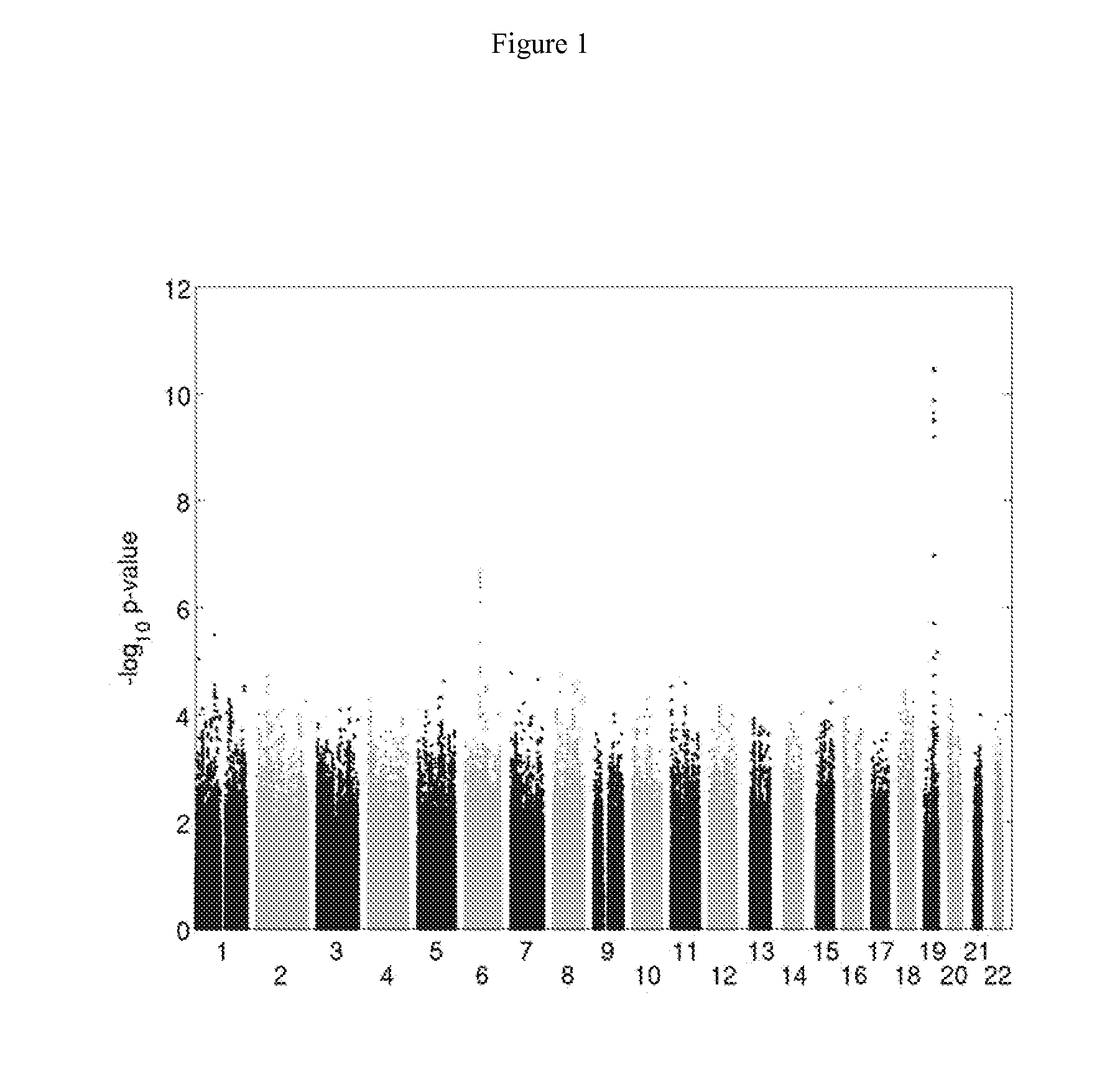Methods for diagnosing or predicting hepatitis c outcome in hcv infected patients
a technology for diagnosing or predicting the outcome of hcv infection, which is applied in the direction of microbiological testing/measurement, biochemistry apparatus and processes, peptide/protein ingredients, etc. it cannot accurately predict the spontaneous clearance or response to treatment, and the infection is associated with significant morbidity and mortality
- Summary
- Abstract
- Description
- Claims
- Application Information
AI Technical Summary
Benefits of technology
Problems solved by technology
Method used
Image
Examples
example 1
[0136]Patients & Methods
[0137]Patients were included within the framework of the Swiss Hepatitis C Cohort Study (SCCS) and the Swiss HIV Cohort Study (SHCS), two multicenter studies carried out at 8 major Swiss hospitals and their local affiliated centres [23]. Written informed consent including genetic testing was mandatory for inclusion, and the study was approved by all local ethical committees. Due to the different genetic predictors of Hepatitis C outcomes in racially diverse populations [10, 13, 24, 25], the inventors restricted the analysis to Caucasians. Of note only the genotypes 1, 2, 3 and 4 were represented in this study.
[0138]Spontaneous Hepatitis C Clearance
[0139]Chronic HCV infection was defined as HCV-seropositivity (using ELISA and confirmed by Immunoblot) and detectable HCV RNA by quantitative assays. Spontaneous Hepatitis C clearance was defined as HCV-seropositivity and undetectable HCV RNA before starting anti-HCV therapy. To avoid the fluctuations of HCV RNA le...
example 2
[0145]Results
[0146]The study included 1142 HCV infected patients (726 mono-infected and 416 HIV co-infected), among whom 245 had spontaneous viral clearance and 897 had chronic infection (Table 3). Among chronically infected patients, 404 were assessable for response to pegylated-interferon alpha ribavirin combination therapy. As expected, the factors associated with spontaneous clearance included lower age (P<0.001), female sex (P<0.001) and active hepatitis B (P<0.001). The factors associated with response to treatment included lower age (P=0.05), female sex (0.03), viral genotype 2 or 3 (P<0.001), lower viral load (P<0.001) and limited fibrosis (P=0.02).
[0147]SNP rs8099917 is clearly associated with spontaneous hepatitis C clearance (FIG. 1). The frequencies of genotypes T / T (ancestral allele), G / T (heterozygous) and G / G (homozygous) were 0.79, 0.20 and 0.01 among patients with spontaneous clearance, versus 0.57, 0.38 and 0.05 among those with chronic infection, respectively (OR=...
example 3
[0151]Pathogen Genetic Risk Determinant.
[0152]The inventors further assessed the joint contribution of host and pathogen genetic risk determinants. Patients were stratified in four groups, according to the viral genotypes (viral genotypes 2 or 3, versus viral genotypes 1 or 4) and host polymorphisms (host rs8099917 G risk allele carriers, versus non-carriers, Table 5). Treatment failure occurred in only 16% of patients with both low risk parameters, compared to 72% among those with both high risk parameters (OR=18.89 [95% CI: 12.87-27.71], P=1.84E−14, Table 5). Among patients infected with genotypes 1 or 4, treatment failure occurred in 72% of risk-allele carriers infected compared to only 38% of non-carriers (OR=6.54 [95% CI: 4.65-9.20], P=3.70E−8). Among patients infected with genotypes 2 or 3, treatment failure occurred in 25% of risk-allele carriers compared to 16% of non-carriers (OR=3.32 [95% CI: 2.21-4.99], P=3.27E−3). Again, Table 4 shows a distribution of the various genoty...
PUM
| Property | Measurement | Unit |
|---|---|---|
| Digital information | aaaaa | aaaaa |
| Fraction | aaaaa | aaaaa |
| Fraction | aaaaa | aaaaa |
Abstract
Description
Claims
Application Information
 Login to View More
Login to View More - R&D
- Intellectual Property
- Life Sciences
- Materials
- Tech Scout
- Unparalleled Data Quality
- Higher Quality Content
- 60% Fewer Hallucinations
Browse by: Latest US Patents, China's latest patents, Technical Efficacy Thesaurus, Application Domain, Technology Topic, Popular Technical Reports.
© 2025 PatSnap. All rights reserved.Legal|Privacy policy|Modern Slavery Act Transparency Statement|Sitemap|About US| Contact US: help@patsnap.com



